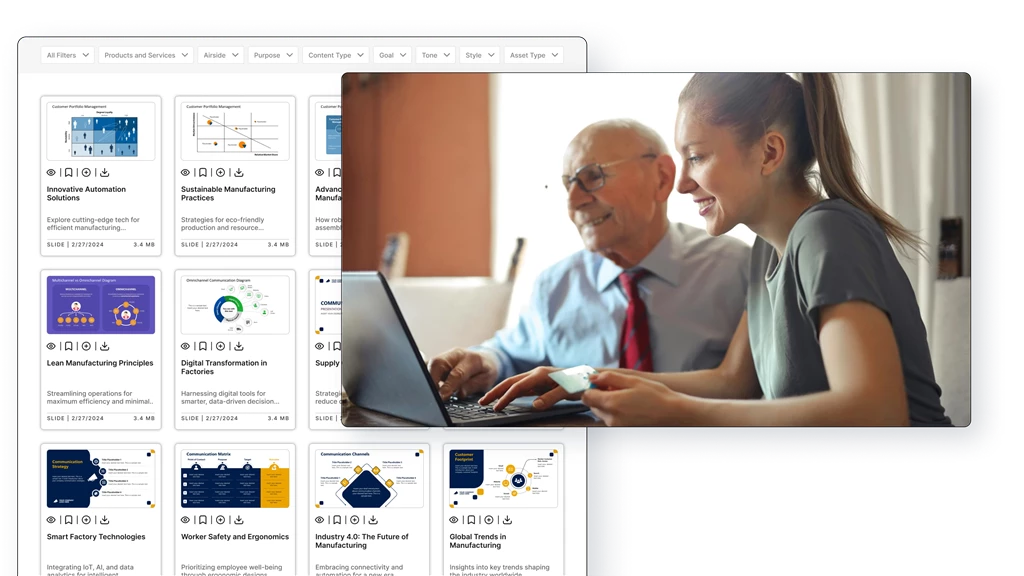1. Organize Documents Consistently
One of the first steps to effective document management is creating a consistent system for organizing your documents. This means using a clear and logical folder structure that everyone in your organization understands.
Tips:
- Create a standard folder structure: Organize folders by categories like projects, clients, or departments. For example, you might have main folders for "Projects" and "Clients," with subfolders for specific projects or client names.
- Use consistent naming conventions: Establish a standard way to name files so they’re easy to find. For instance, use "ClientName_ProjectName_Date" as a format. Consistent naming helps avoid confusion and makes searching easier.
2. Use a Document Management System (DMS)
A Document Management System (DMS) can greatly simplify your document organization. DMS software helps you store, retrieve, and manage documents digitally, making it easier to keep track of everything in one place.
Tips:
- Centralized storage: Use a DMS to store all your documents in one central location. This ensures that everyone has access to the latest version of a document, eliminating the need to search through multiple locations.
- Version control: Choose a DMS that offers version control, so you can track changes made to documents and easily revert to previous versions if needed.
- Security features: Ensure your DMS has strong security measures, like access controls, to protect sensitive information.
3. Implement Access Controls
Not everyone in your organization needs access to every document. Implementing access controls ensures that only authorized personnel can view, edit, or delete certain documents. This not only enhances security but also helps prevent accidental changes or deletions.
Tips:
- Role-based access: Assign permissions based on job roles. For example, your finance team might have access to financial documents, while your HR team accesses employee records.
- Audit trails: Use a system that logs who accessed or edited a document and when. This adds a layer of accountability and helps track any changes.
4. Back Up Your Documents Regularly
Regular backups are essential to protect your documents from data loss due to system failures, cyberattacks, or other unexpected events. A reliable backup strategy ensures that you can quickly recover your documents if something goes wrong.
Tips:
- Automated backups: Set up automated backups so your documents are saved regularly without requiring manual intervention.
- Offsite storage: Store backups in a different location or in the cloud to protect against physical damage like fires or floods.
5. Encourage Document Collaboration
In today’s collaborative work environment, it’s important to have tools and practices that facilitate teamwork. This means enabling multiple people to work on the same document simultaneously, with changes tracked and saved automatically.
Tips:
- Collaborative platforms: Use tools like Google Workspace or a DMS with real-time collaboration features to allow team members to edit documents together.
- Commenting and feedback: Encourage team members to use commenting features instead of making direct changes to the document, so others can review and respond.
6. Use Document Templates
Templates are a great way to save time and ensure consistency across your documents. By creating standardized templates for frequently used documents, you reduce the need to start from scratch each time.
Tips:
- Create templates for common documents: Set up templates for invoices, contracts, reports, and any other documents you regularly use. Include branding elements like your company logo and colors.
- Store templates in your DMS: Make sure your templates are easily accessible to everyone who needs them, stored in a central location within your DMS.
7. Implement Document Retention Policies
Not all documents need to be kept forever. Having a clear document retention policy helps you determine how long to keep different types of documents and when to dispose of them. This keeps your system from getting cluttered and ensures compliance with legal and regulatory requirements.
Tips:
- Categorize documents by retention period: Identify which documents need to be kept for a certain period (e.g., tax records for seven years) and which can be deleted sooner.
- Automate retention schedules: Use your DMS to automatically delete or archive documents once they reach the end of their retention period.
8. Educate Your Team
Even the best document management system won’t be effective if your team doesn’t know how to use it properly. Training your employees on document management best practices ensures everyone is on the same page and can contribute to maintaining an organized system.
Tips:
- Provide training sessions: Offer regular training on how to use your DMS, naming conventions, and document handling procedures.
- Create a document management policy: Develop a clear policy outlining how documents should be managed, stored, and accessed. Make sure all employees are familiar with this policy.
9. Regularly Review and Clean Up
Document management is not a "set it and forget it" process. Regularly reviewing and cleaning up your document storage helps you get rid of outdated or unnecessary files, keeping your system organized and efficient.
Tips:
- Schedule periodic reviews: Set aside time every quarter or year to review your documents and delete those that are no longer needed.
- Archive old documents: Move outdated documents that still need to be kept for reference to an archive folder or system to keep your main storage area clutter-free.
10. Leverage Search and Tagging
Finding documents quickly is one of the biggest challenges in document management. Using advanced search functions and tagging can significantly reduce the time spent looking for specific files.
Tips:
- Use metadata and tags: Tag documents with relevant keywords, dates, and categories to make them easier to search for later.
- Advanced search features: Use a DMS that offers advanced search capabilities, allowing you to search by tags, document content, or other criteria.



